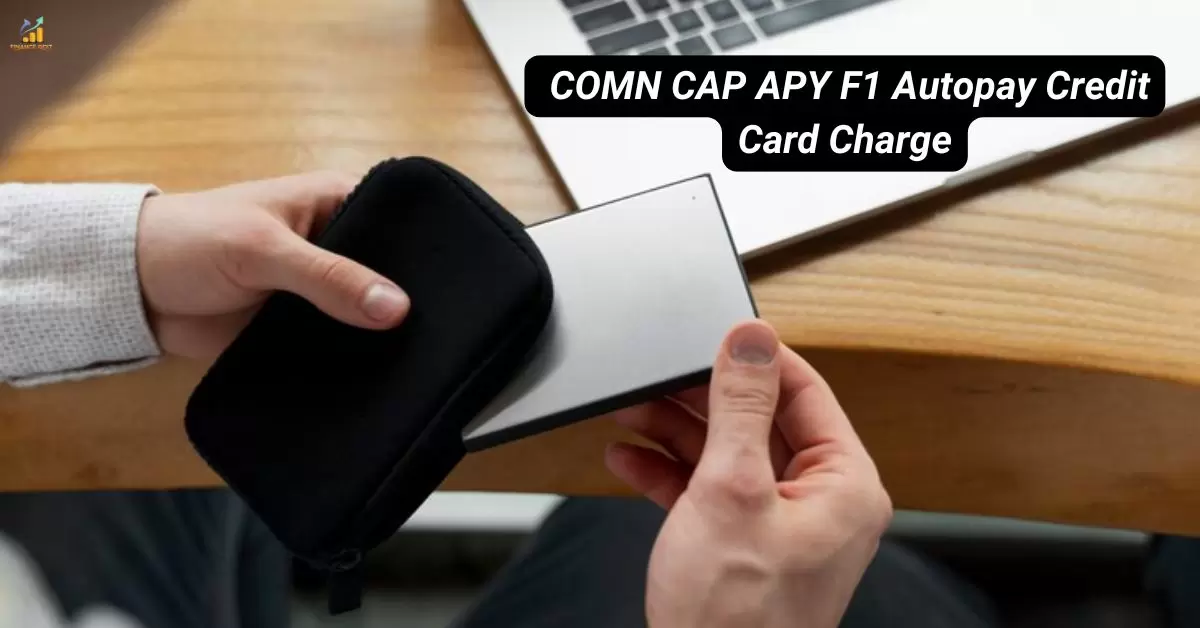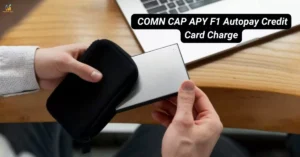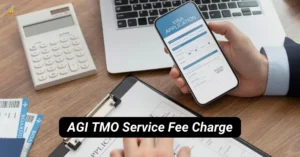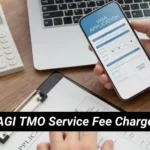Have you ever seen a charge “COMN CAP APY F1 Autopay” on your bank statement and felt confused? If so, You’re not alone. Many Americans scratch their heads when they encounter this cryptic entry. But don’t worry – we’re about to unravel this financial mystery together.
In this comprehensive guide, we will delve into the planet of credit card statements concentrating on this specific fee that has left many people wondering. Whether you have been using a credit card for some time or it is only your maiden time to use one; it is crucial that you understand all about your statement so as to remain financially stable and identify any hitches that might exist.
So, let’s embark on this journey to demystify the COMN CAP APY F1 Autopay credit card charge and equip you with the knowledge to navigate your financial statements like a pro.
Cracking the Code: What Does COMN CAP APY F1 Autopay Actually Mean?
Let’s break down this alphabet soup of a charge step by step:
- COMN: This stands for “Common” or “Commonwealth,” depending on your specific card.
- CAP: Short for “Capital,” as in Capital One, a major credit card issuer.
- APY: Typically means “Annual Percentage Yield,” but in this context, it’s part of the internal coding.
- F1: A specific product or feature code used by Capital One.
- Autopay: Indicates an automatic payment set up on your account.
Put it all together, and “COMN CAP APY F1 Autopay” translates to a scheduled automatic payment for your Capital One credit card. Mystery solved! But let’s dig deeper to understand why you’re seeing this charge and what it means for your finances.
The Capital One Connection: Why This Charge Appears
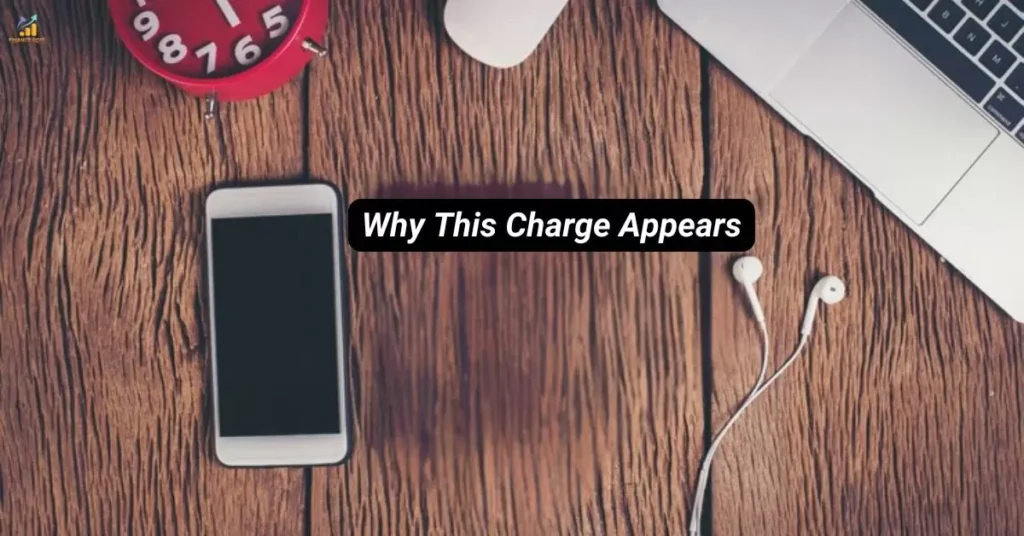
If the COMN CAP APY F1 Autopay charge starts appearing in your bank statement, then most likely it is connected to your capital One credit card account. It is important to note that Capital One is considered one of the largest financial institutions in the world with its diverse credit card options available for customers of varying tastes and credit scores. From the popular Quicksilver Cash Rewards to the luxury Venture X, each card might display this charge slightly differently.
Here’s a quick rundown of popular Capital One cards and their features:
| Card Name | Rewards Type | Annual Fee | Typical User |
| Quicksilver | Cash back | $0 | Everyday spenders |
| Venture | Travel miles | $95 | Frequent travelers |
| Savor | Cash back on dining/entertainment | $95 | Foodies and entertainment enthusiasts |
| Secured Mastercard | No rewards (builds credit) | $0 | Credit builders |
Regardless of which card you have, if you’ve set up automatic payments, you’ll likely see the COMN CAP APY F1 Autopay charge. This indicates that Capital One has successfully processed your scheduled payment, helping you stay on top of your credit card bill.
Autopay Explained: The Ins and Outs
Most credit card companies, including Capital One, offer the cool feature known as autopay. It enables you to create automatic recurring payments meant for settling your credit card bill. Below is its mode of operation:
- You choose a payment amount (minimum due, statement balance, or custom amount).
- You select a payment date (due date or a few days before).
- Capital One automatically deducts the specified amount from your linked bank account on the chosen date.
Benefits of Autopay:
- Never miss a payment
- Avoid late fees
- Maintain a good credit score
- Save time on manual payments
Potential Drawbacks:
- Risk of overdraft if you’re not careful with your checking account balance
- Might pay more interest if you only pay the minimum due
- Less awareness of your spending habits if you’re not regularly reviewing your statement
“Autopay is like a trusty assistant for your finances. It’s there to help, but you still need to supervise.” – Personal Finance Expert Jane Doe
Should You Be Concerned About This Charge?

It might be concerning when seeing a charge on the statement that you don’t recognize, but usually there’s nothing to worry about when you see COMN CAP APY F1 Autopay. Nevertheless, always be cautious. These are some things to look out for:
- The charge amount doesn’t match what you’ve set up for autopay
- You don’t remember setting up autopay
- The charge appears multiple times in a single billing cycle
- You don’t have a Capital One credit card
There is no need to panic if you see any of these issues, you only need to contact Capital One’s customer service representatives for further explanation. They’re there to help and can provide detailed information about the charge.
Read About: What Is the AGI TMO Service Fee Charge on Your Bank Statement? Explained!
Taking Control: Managing Your Capital One Autopay Settings
Now that you understand what the COMN CAP APY F1 Autopay charge represents, you might want to review or adjust your autopay settings. Here’s a step-by-step guide to accessing and managing your autopay:
- Log in to your Capital One online account or mobile app
- Navigate to the “Payments” or “AutoPay” section
- Review your current autopay settings
- Make changes if needed (amount, date, linked account)
- Save your changes and confirm
Keep in mind that you can select the financial circumstances that suit your autopay. The people who opt for minimum payment would be happy not to pay any extra money.
Pro Tip: Set up account alerts to notify you before each autopay transaction. This extra step keeps you informed and helps you ensure sufficient funds in your linked account.
Beyond the Charge: Understanding Your Credit Card Statement
The COMN CAP APY F1 Autopay charge is just one piece of the puzzle when it comes to reading your credit card statement. Let’s explore some other common entries you might encounter:
- APR: Annual Percentage Rate (the interest you pay on carried balances)
- Balance Transfer: Moving debt from one card to another
- Cash Advance: Using your credit card to withdraw cash
- Foreign Transaction Fee: Charge for purchases made outside the U.S.
- Late Payment Fee: Penalty for missing your payment due date
These terms empower you to know how to use your credit card well and notice any mistakes without delay.
Case Study: The Importance of Statement Vigilance
Meet Sarah, a 32-year-old graphic designer from Chicago. Sarah had set up autopay for her Capital One Quicksilver card but rarely checked her statements. One month, she noticed her checking account balance was lower than expected. Upon reviewing her credit card statement, she found:
- The usual COMN CAP APY F1 Autopay charge
- An unfamiliar recurring charge for a streaming service she thought she had canceled
- A foreign transaction fee from an online purchase she didn’t realize was from an international seller
By taking the time to review her statement, Sarah was able to:
- Cancel the unwanted streaming service
- Dispute the foreign transaction fee (which Capital One refunded as a courtesy)
- Set up alerts for large purchases and international transactions
This case underscores the importance of regularly reviewing your statements, even with autopay set up.
What If There’s a Mistake? Navigating the Dispute Process

Despite the convenience of autopay, errors can happen. If you believe there’s a mistake related to your COMN CAP APY F1 Autopay charge or any other aspect of your statement, here’s what to do:
- Gather Information: Collect relevant statements, receipts, and any communication with Capital One.
- Contact Capital One: Call the number on the back of your card or use the online dispute form.
- Explain the Issue: Clearly describe why you believe there’s an error.
- Follow Up: Keep track of your dispute and respond promptly to any requests for additional information.
In accordance with the Fair Credit Billing Act, you have the right to challenge any charges that you feel are wrong. It usually takes Capital One 30 days to get back to you after you dispute something, and 90 days to sort it out.
Staying Financially Savvy: Tools and Tips
In today’s digital age, numerous tools can help you stay on top of your finances:
- Budgeting Apps: Apps like Mint or YNAB can help you track spending across all your accounts.
- Credit Monitoring Services: Keep an eye on your credit score and get alerts for new accounts or inquiries.
- Capital One’s CreditWise: A free tool for monitoring your credit score, even if you’re not a Capital One customer.
Additionally, consider these financial best practices:
- Review statements monthly: Set a recurring calendar reminder to check your accounts.
- Keep a cushion in your checking account: This helps avoid overdraft fees if autopay amounts fluctuate.
- Use credit cards responsibly: Pay off balances in full when possible to avoid interest charges.
- Stay informed about your rights: Familiarize yourself with credit card regulations and protections.
What to Do If You Don’t Recognize a Charge?

If you spot a charge you don’t recognize, don’t panic. Call your card issuer right away using the number on the back of your card.
They’ll help you figure out if it’s a mistake or fraud. Remember, you’re protected against unauthorized charges, but you need to report them promptly.
Read About: What Are HFT ePay Charges? Simple Explanation & How to Dispute Them
Frequently Asked Questions
Can I change the description of the COMN CAP APY F1 Autopay charge on my statement?
Unfortunately, this description is standardized by Capital One and can’t be customized. However, you can use budgeting apps to categorize or rename transactions for your personal tracking.
How often does the COMN CAP APY F1 Autopay charge appear?
Typically, this charge appears once per billing cycle, on the date you’ve set for your automatic payment.
What if I don’t remember setting up autopay?
Contact Capital One immediately. While it’s possible you set it up and forgot, it’s better to verify to ensure there’s no fraudulent activity on your account.
Is this charge the same for all Capital One cards?
The exact wording might vary slightly between different Capital One products, but it will generally follow a similar format and include “CAP” and “Autopay” in the description.
How can I tell if a charge is from Capital One or a scammer?
Legitimate Capital One charges will always include “CAP” in the description. If you’re unsure, don’t hesitate to contact Capital One directly using the number on the back of your card.
Final Thoughts
Understanding charges like COMN CAP APY F1 Autopay is more than just decoding bank statement jargon – it’s about taking control of your financial life. By demystifying these entries, you’re better equipped to:
- Spot potential fraud or errors quickly
- Make informed decisions about your credit card usage
- Optimize your payment strategies to minimize fees and interest
Remember, your financial journey is unique. What works for one person might not be ideal for another. The key is to stay informed, remain vigilant, and don’t hesitate to ask questions when something doesn’t seem right.
Make sure you give yourself a thumbs up the next time you note that COMN CAP APY F1 Autopay charge, because you are one of the few clever ones who can comprehend it. Kudos on sticking with responsible financial management – your future self will be grateful.

I am a professional finance blogger who simplifies complex financial topics, offering practical advice on personal finance and market trends. My blog helps readers make informed financial decisions with clear, accurate insights.
